
Fast, affordable Internet access for all.


When a community invests in a municipal broadband network, it often does so because it hopes to reap economic benefits from the network. Many people and organizations have explored the positive relationship between municipal Internet networks and economic development, including a White House report published in January 2015. Municipal networks create jobs by ensuring businesses have fast, affordable, and reliable Internet access; the old DSL and cable networks just don't cut it. These networks improve the productivity of existing businesses and attract new businesses to communities, allow individuals to work from home more effectively, support advanced healthcare and security systems, strengthen local housing markets, and represent long term social investments in the form of better-connected schools and libraries. They also create millions of dollars in savings that can be reinvested into local economies.
"Upgrading to higher speed broadband lets consumers use the Internet in new ways, increases the productivity of American individuals and businesses, and drives innovation throughout the digital ecosystem." - Executive Office of President Obama
When municipalities choose to deploy fiber networks, they introduce Internet services into the community that are not only significantly faster than DSL and cable, but more reliable. With more reliable fiber connections, businesses and individuals are far less likely to experience temporary blackouts that can halt productivity in vexing and expensive ways. And because these networks are locally-owned and operated, business owners do not have to spend hours on the phone with an absentee Internet Service Provider like AT&T in the (albeit unlikely) event of a problem.
We at the Institute for Local Self-Reliance have catalogued numerous examples of economic development achievements that have occurred as a result of local governments deploying a municipal broadband network. Below, you can find a wide range of articles, studies, anecdotes, and other resources that speak to the economic successes enabled by municipal networks, organized by topic:
Keep up to date with all things community broadband by subscribing to a once-per-week email with stories about community broadband networks.
Municipal networks create jobs:

Look no further than Morristown, Tennessee, for an example of job creation thanks to municipal fiber. The city took advantage of its local electrical utility, Morristown Utility Systems, to provide gigabit speeds, and businesses jumped at the opportunity. In 2013, Oddello Industries, a furniture manufacturer, brought 228 jobs to the community after investing in a $4.4 million site expansion in Morristown. More recently, a call center looking to relocate to the city was wowed by the municipal utility’s offer to install fiber for free because the city valued the future economic benefits the call center would bring to Morristown over the cost of the fiber installation.
"You can't grow jobs with slow Internet." - Stephanie Rawlings-Blake, Mayor of Baltimore
Municipal networks attract new businesses:
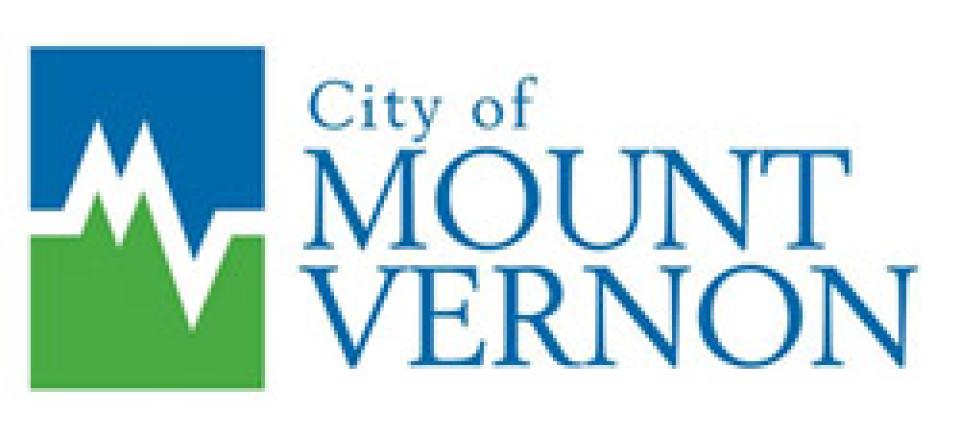
The city of Mount Vernon, Washington has two things in common with our country’s first president, but unlike George, it boasts an impressive municipal broadband network that has attracted high-tech businesses. For example, a digital legal firm, Blank Law, relocated from Seattle to Mount Vernon in order to take advantage of faster speeds offered by the city’s municipal broadband network. While high-speed Internet was not the only reason Blank Law cited for choosing Mount Vernon over other towns (other reasons include quality of life and free parking), it played a significant role. Fiber is rarely the sole reason for a relocation, but it can often be a deciding factor.
"It's almost a feeling of disbelief when we tell companies today we can provide a gig to your business and to your house...These companies want to go where they can see the gig service." - Marshall Ramsey, President of the Morristown, Tennessee Chamber of Commerce
Municipal networks serve existing businesses and keep critical jobs in town:

The small Minnesota town of Windom nearly entered crisis mode when Fortune Trucking, a local company that employed 47 people in a town of 4,600, announced that slow Internet speeds might force it to leave town. Although the company’s headquarters were located a mile outside of the Windom’s jurisdiction, community members successfully lobbied to bring municipal fiber to Fortune, saving those jobs and stabilizing the local economy.
"Municipal broadband can be a powerful lever against the digital divide that condemns people to the isolation and reduced economic opportunities experienced by many of our low-income, disabled, and people of color community members" - Kshama Sawant, Seattle City Councilmember

Municipal networks support home-based productivity:
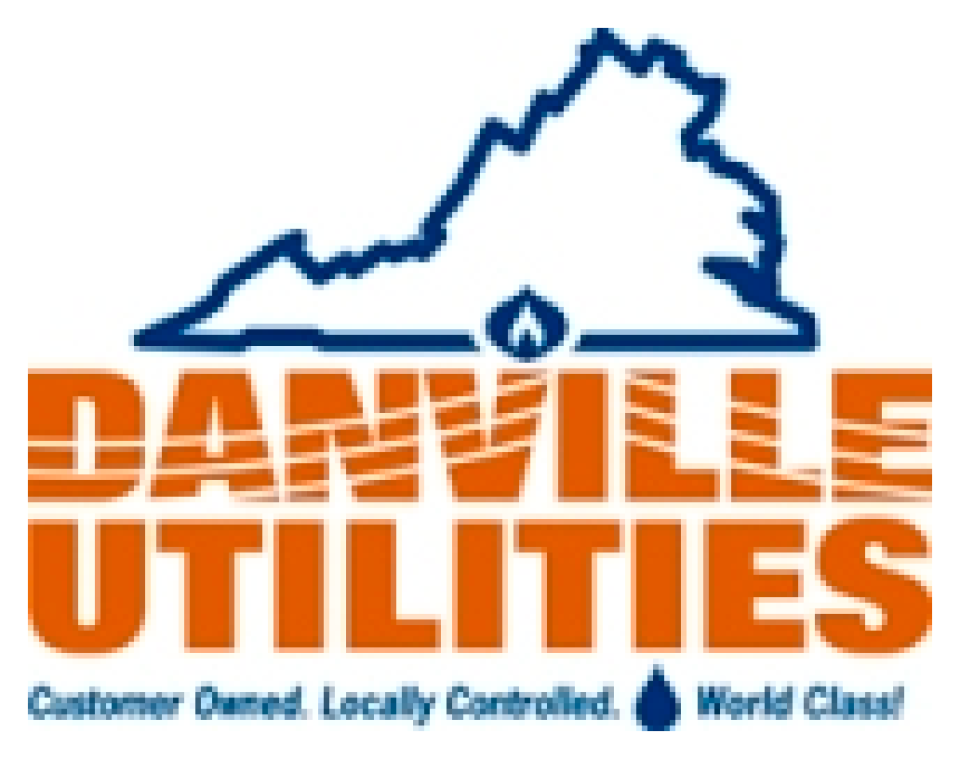
Municipal networks advance healthcare, education, and research:
"We are embarking on new initiatives with our local school district and regional colleges and universities to leverage broadband and to facilitate discussion between schools and the business community to strengthen, retain and attract quality workforce" - Dana McDaniel, Deputy City Manager of Dublin, Ohio
Municipal networks initiate tech booms and incubate start-ups:

"...in the 21st century, in this age of innovation and technology, so much of the prosperity that we're striving for, so many of the jobs we want to create, depend on our digital economy" - President Barack Obama, Speech at Cedar Falls Utilities

Municipal networks save money, which can be reinvested in local economies:
Municipal networks increase home values:
 Photo courtesy of Dennis van Zuijlekom through Flickr Creative Commons
Photo courtesy of Dennis van Zuijlekom through Flickr Creative Commons
General resources on economic development and municipal / broadband networks:
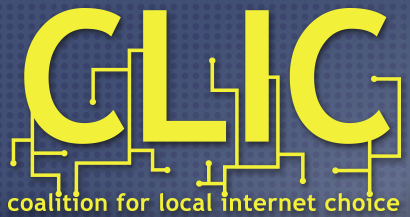
"The message to policymakers is clear: If you want to increase economic growth, focus on broadband." - Robert Pepper, Vice President of Global Technology Policy at Cisco
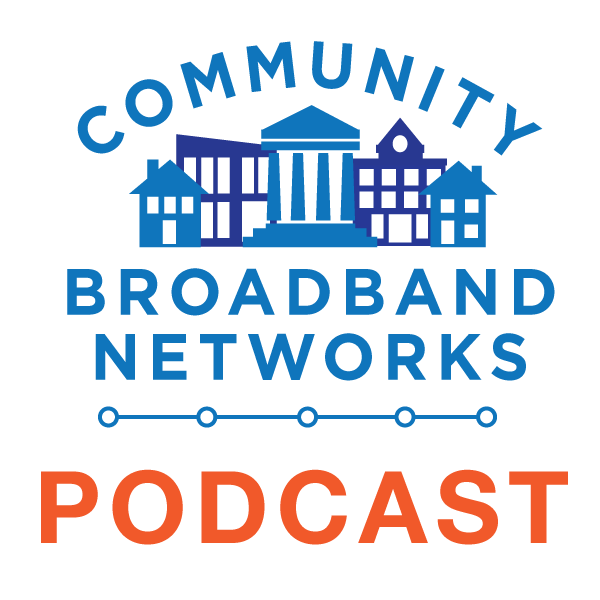
Video and audio resources on economic development and municipal networks:
"Having the infrastructure in place around technology, as well as the asset of this really historic and charming downtown, is a really interesting intersection and I think a lot of people are drawn to that." - Kimberly Van Dyk, Director of Planning and Community Revitalization of Wilson, North Carolina
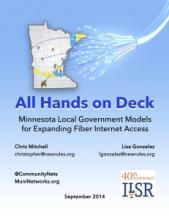
Update: Read an updated version of this report, published in July 2021, here, titled Minnesota Broadband: Land of 10,000 Connectivity Solutions [pdf]. It revisits all of the below communities to see how they fared over the intervening years, while adding new counties, communities, and, for the first time, two local Internet Service Providers.
Original Report: Minneapolis, MN —In 2010 the Minnesota legislature set a goal: universal access to high speed broadband throughout the state by 2015. As 2015 approaches we know that large parts of Greater Minnesota will not achieve that goal, even as technological advances make the original benchmarks increasingly obsolete.
But some Minnesota communities are significantly exceeding those goals. Why? The activism of local governments.
A new report by ILSR, widely recognized as one of the most knowledgeable organizations on municipal broadband networks, details the many ways Minnesota’s local governments have stepped up. “All Hands On Deck: Minnesota Local Government Models for Expanding Fiber Internet Access” includes case studies of 12 Minnesota cities and counties striving to bring their citizens 21st century telecommunications.
Recently, we reported that ECFiber in Vermont plans to expand in the near future. To fund that expansion, the consortium will seek out new, larger scale funding to meet the increased demand. ValleyNet, Inc., the company that manages the FTTH network for ECFiber is now searching for a Managing Director. The full posting is listed below and can be viewed at the NTCA Rural Broadband Association Job Center.
In keeping with the community goals of the network, we found value in this particular specification:
Community Foundation: In view of the above, the MD must fully appreciate and embrace the concept of a community-owned public utility and be able to relate successfully to: the individual towns; their governing bodies (“Select Boards”); the ECFiber Governing Board and its members; and with the citizens themselves. Although ECFiber is required by law and constitution to be entirely self-supporting and to “pay its own way”, it is not a purely “profit-maximizing” institution. Balancing the needs of the community with the commercial discipline required to fund all its activities without resorting to taxpayer funding sources is a basic requirement of the MD’s position.
Award-winning supercomputing apps, medical research, economic development, and quantum computing advances. What do they all have in common? They all depend on the DubLINK network running underneath Dublin, Ohio, a suburb on the Northwest edge of Columbus. The city of 43,000 people has 125 miles of fiber optics in the ground, both within its own boundaries and in the form of fiber purchased by the city within metro and regional networks.
DubLINK began in 1999 as a public private partnership with the Fishel company to build an institutional network. In the wake of the 1996 Telecommunications Act, Dublin worried that a recent massive investment of $70 million in streetscaping would be undone as competing providers dug up newly paved streets to install fiber optics. To avoid this, the City signed a franchise agreement with Fishel to install a multi-conduit system, with the city receiving some conduit for its own use.
Using 1.25” conduits installed in the city’s existing sewer system, the network runs for 25 miles underneath Dublin’s business district and connects six city buildings, who use their own lit fiber for data and voice services, eliminating expense leased line fees. This has allowed the city to save approximately $400,000 per year for the last 12 years in connectivity and information technology expenses.
In 2004, Dublin spent $3.5 million to purchase 96 strands running 100 additional miles through Columbus FiberNet, bringing the total length of the DubLink network to its current 125 miles. FiberNet is a duct system that runs throughout a significant portion of central Ohio, including Columbus and its surrounding suburbs.
As our readers know, the FCC is currently considering petitions submitted by Chattanooga and Wilson, North Carolina. Both communities want the ability to expand their ability to offer advanced telecommunications services, contrary to existing state anti-muni laws. As we glance through the comments, we notice that ISPs, advocacy groups, and local governments are not the only commenters with a vested interest in the outcome.
There are also compelling stories from individuals, local businesses, and organizations that are looking for better options. In some cases they have one provider but are unhappy with the service so support municipal network expansion. In other cases, they have dial-up (or no service at all) and are maddeningly close to an EPB or Greenlight connection but state restrictions forbid service to them.
We recently spoke with Joyce Coltrin, owner of J & J Nursery located on the edge of Cleveland, Tennessee, in Bradley County. She is about 32 miles from the heart of Chattanooga but only 3/8 mile from the edge of the EPB fiber optic service area. Her only choice for Internet at her nursery is AT&T dial-up. Joyce tells us:
"I could walk right to it - it is the closest provider and we don't have any broadband access!"
Joyce submitted comments early in the proceedings. She choose to send her comments via snail mail because her email is so unreliable.
For the past 15 years, Joyce and other people in her community have requested better service from AT&T. They were told repeatedly it would be 3 months, 6 months, 9 months until they would get upgrades but it never happened. They finally decided to look for connectivity elsewhere. Joyce and her neighbors approached their electric provider, Volunteer Energy Cooperative, in the hopes that they could work with EPB to bring services to the area. Volunteer and EPB had already discussed the possibility, but when the state law was passed that prevented EPB from expanding, the efforts to collaborate cooled.
In the past few months, Lafayette has drawn in three high tech companies that will create approximately 1,300 well-paying positions. In addition to the community's commitment to boost its high-tech workforce, better connectivity offered by LUS Fiber helped attract the new businesses.
According to a Daily World article, the most recent addition is Perficient, Inc. The information technology and management consulting company is based in St. Louis. Perficient will add 50 new positions by the end of 2015 and another 245 over the next 6 years; average annual salary will be $60,000. The area should also see 248 additional indirect jobs. Perficient leadership intends to recruit from South Louisiana Community College and University of Louisiana at Lafayette.
This past spring, CGI announced it would employ 400 high-tech employees in a new finance facility in Lafayette. CGI will also recruit from the local high-tech educational programs. James Peake from CGI told the Advocate that the company has made an effort to keep tech positions "onshore" rather than sending them overseas. From the article:
CGI Vice President Dave Henderson cited UL-Lafayette’s top-ranked computer science program and Lafayette’s growing workforce and fiber-optic network.
This past summer, start-up Enquero announced it would open a tech center in Lafayette. The Milpitas, California company plans to hire 350 new employees by the end of 2017. City officials also expect to see 354 new indirect positions. According to Bloomberg Business Week, Enquero executives considered New Orleans, Baton Rouge, and four other states.
From City-Parish President Joey Durel's official statement:
We reported back in June on Huntsville, Alabama's decision to undertake feasibility study to evaluate its options for increasing next generation fiber optic internet access throughout the city. AL.com is now reporting that Huntsville Utilities hopes to hear the results of the study within 90 days, allowing it to decide whether it will take steps to expand its minimal existing fiber infrastructure and offer connections to businesses and the public.
The sense of urgency in Huntsville is not surprising, given that it sits just South of the Tennessee border and a less than 100 miles from Chattanooga, the Gig City. News coverage in Huntsville on the possibilities of a future municipal fiber network make constant reference to Chattanooga's example, including this list of valuable lessons Huntsville can learn from its neighbor.
The scenario Huntsville fears is laid out in another AL.com article, featuring the story of Matt Barron, a young tech entrepruener who moved his startup from Huntsville to Chattanooga this summer. Barron describes the attraction of a city with a commitment to next generation infrastructure, above and beyond the advantages of speed:
"I want to live in the sort of city that puts a high-speed Internet in," Barron said. "It might have nothing to do with the bandwidth. It has everything to do with the community and the people, the people that stand behind what is basically a human right, right now."
Barron sees the Internet as fundamental. People "can't even apply for a job without bandwidth," he said, and "you have the right to free speech, but speech happens largely on the Internet these days. So, it's a human right."
Chattanooga is forward-thinking enough "to even think about putting a high-speed Internet in," Barron said. "Those are the people I want to be around."

Longmont is about to break ground on the citywide FTTH gigabit network but it is already offering services to local businesses and a few neighborhoods that started as pilot projects. Vince Jordan, previously a guest two years ago, is back to update us on their progress. Until recently, Vince was the Telecom Manager for Longmont Power and Communications in Colorado.
He has decided to return to his entrepreneurial roots now that the utility is moving forward with the citywide project. But he has such a great voice and presence that we wanted to bring him back to share some stories. We talk about Longmont's progress and how they dealt with a miscalculation in costs that forced them to slightly modify prices for local businesses shortly after launching the service. And finally, we discuss the $50/month gigabit service and how Longmont has been able to drive the price so low. You can read our full coverage of Longmont from this tag.
This show is 20 minutes long and can be played on this page or via Apple Podcasts or the tool of your choice using this feed.
Transcript below.
We want your feedback and suggestions for the show-please e-mail us or leave a comment below.
Listen to other episodes here or view all episodes in our index. See other podcasts from the Institute for Local Self-Reliance here.
Thanks to Waylon Thornton for the music, licensed using Creative Commons. The song is "Bronco Romp."
Plan on spending Thursday, October 9 in Mount Vernon, Washington. Chris will speak with three other experts on creating a local environment attractive to the tech industry.
The "Connect With The World" event will occur at Skagit Valley College's MacIntyre Hall from 10 a.m. - 3:30 p.m. PDT. Other speakers will be:
Mark Anderson: One of FORTUNE's “100 Smartest People We Know,” Mark is a frequently sought after speaker around the world. His long- running weekly newsletter, Strategic News Service (SNS), counts a stellar readership, including the likes of Michael Dell, Bill Gates and Steve Ballmer.
Susannah Malarkey: Executive Director of the Technology Alliance, a statewide organization of leaders from technology businesses and research institutions dedicated to Washington’s long-term economic success.
Craig Settles: Municipal broadband expert for journalists at CNN, the Wall Street Journal, New York Times, Time Magazine and a host of business, technology and local media outlets.
Mount Vernon's municipal open access fiber network serves public entities and businesses within the City, in nearby Burlington, and in the Port Skagit area. The community began the project in 1995 and developed the network incrementally. We spoke with Kim Kleppe, Information Systems Director, and Jana Hansen, Community & Economic Development Director, in episode 38 of the Community Broadband Bits podcast.
For more on the event, contact Jana at (360)336-6214 or email her at: janah@mountvernonwa.gov.
In a revealing video about the Internet access problem in rural Minnesota, Annandale City Administrator Kelly Hinnenkamp below describes her town's struggle with connectivity. The video is the latest in a series on the Minnesota Senate DFL YouTube page intended to shed light on the critical situation in the state.
Hinnenkamp describes broadband in the areas outside of Annadale as "horrific." She goes on to discuss how the community's poor connectivity negatively impacts its economic health. She shares a story about entrepreneurs from an artisan spice business once located in Annandale. The company started with online sales but the owners anticipated opening a storefront in the downtown area of the lake community. After contending with eight outages in three weeks, the new business pulled up stakes and moved to Buffalo.
Buffalo, located only 15 minutes away from Annandale, offers fast, reliable, affordable fiber service to local businesses.
In a February Minnesta Public Radio News article, Hinnenkamp told Dave Peters:
“Broadband is probably the single most important issue in our community right now,” she said. “Our big issue is not that we don’t have service but that we have one provider that has shown little interest in improving it. Broadband is our future."
In a Star Tribune article, Pete Kormanik, the owner of a local McDonald's, expressed his concern as a business owner:
Downloading data for a digital menu board — a task that would have taken 30 minutes at his other restaurants — dragged on for more than four hours.
After delays in processing credit cards, watching training videos and transmitting orders, Kormanik switched to an AT & T antenna. But a cloudy day can slow that service.
“If you can’t stay current with [connectivity], you’re just going to fall behind,” Kormanik said. “And businesses won’t go into those locations.”